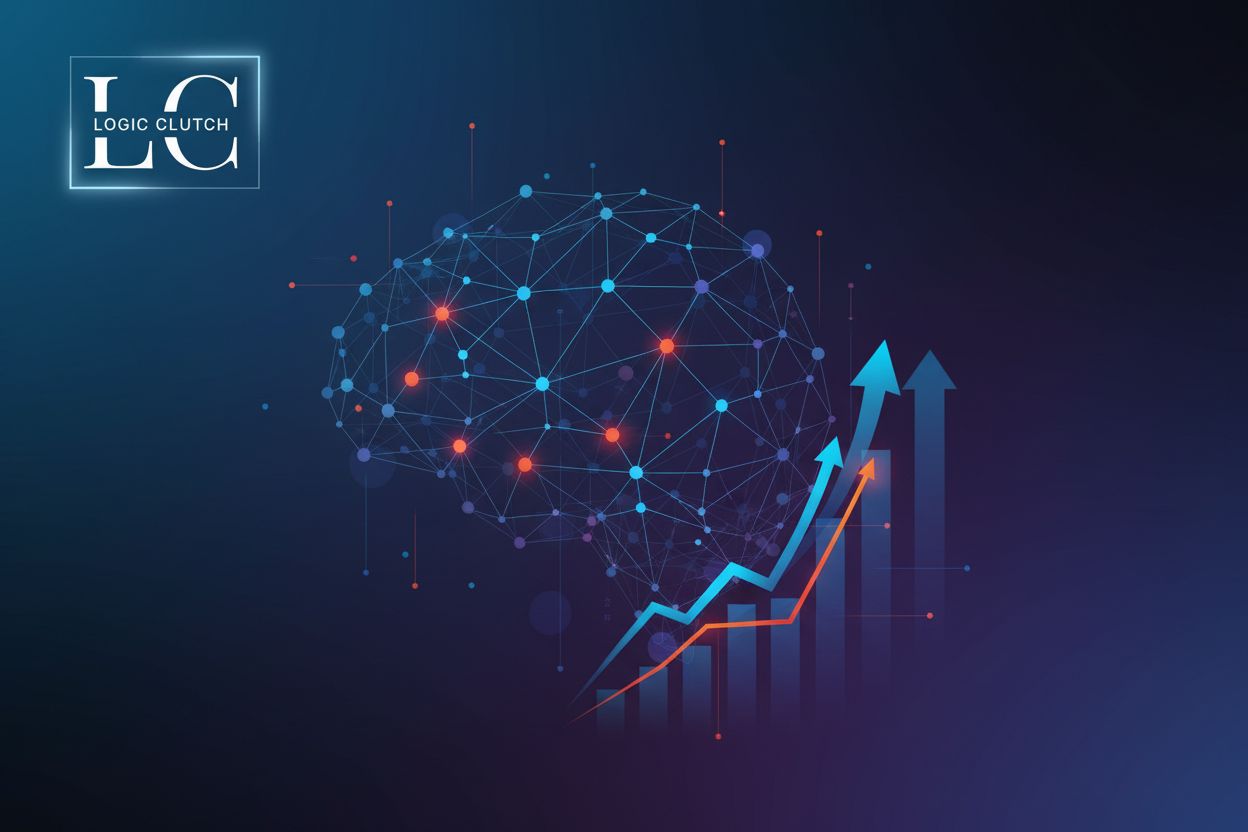Democratizing Big Data Analytics for Enterprises
TL;DR
Understanding Big Data Democratization in the Enterprise Context
Big data. It's kinda like that junk drawer everyone has, right? Except instead of tangled cords and old batteries, it's overflowing with information. The trick is, how do you actually use all that stuff?
That's where democratizing big data comes in. Basically, it's about giving more folks access to the data, not just the it crowd. Here's the gist:
Defining Big Data: We're talking huge amounts of data, coming in fast, and in all sorts of forms. Think website clicks, customer info, sensor readings—the whole shebang. Functionize.com notes the three V's: Volume, Velocity, and Variety.
Opening it Up: Data democratization is all about making data accessible to everyone, even if they aren't a data scientist. It's about self-service analytics, where people can get the insights they need without having to jump through it hoops, as noted by cdomagazine.tech.
From IT to Everyone: The old way was it controlled everything. Now, it's about empowering users. This means IT shifts from being the sole gatekeeper of data to becoming a facilitator and enabler. They're responsible for building robust, secure infrastructure and providing the tools that allow others to access and analyze data independently. Users, on the other hand, gain the responsibility and the freedom to explore data relevant to their roles, ask their own questions, and make more informed decisions without constant IT intervention. For example, a marketing manager might now be able to pull their own campaign performance reports directly from a user-friendly dashboard, rather than submitting a formal request to the IT department. Similarly, a sales representative could access real-time customer interaction data to personalize their outreach, rather than waiting for a weekly summary.
Not Just Data Management: This isn't just about storing data, its about using it. It's a shift in how we approach analytics, making it more user-friendly.
Well, imagine if everyone in your company could make better, data-driven decisions. It'd be pretty awesome, right?
The Role of Salesforce CRM in Democratizing Data
Okay, so you wanna turn Salesforce from just a crm into like, a data powerhouse, huh? Sounds ambitious--I dig it. I mean, most companies are sitting on a goldmine of data they aren't even using.
Salesforce, at its core, is a killer crm. But it can be so much more if you start connecting it to your big data sources. Think about pulling in data from your website, your marketing automation tools, even your supply chain--that's when things get interesting.
To bridge the gap between the broad concept of data democratization and the practical application of tools like Salesforce, it's important to recognize that while democratization aims to make data accessible to all, specific platforms are crucial in facilitating this access. Salesforce, as a widely adopted CRM, can serve as a central hub for this democratized data.
- Connecting external data sources is key. You can use stuff like Salesforce Connect to tap into data in real-time, which is a game changer. (Ready to Uplevel Your Service? Meet the New Wave of AI Agents)
- Data integration is another piece of the puzzle. You gotta make sure all that data plays nice together inside Salesforce. Otherwise, it's just a mess. This often involves processes like Extract, Transform, Load (ETL), where data is pulled from various sources, cleaned and standardized, and then loaded into Salesforce. Alternatively, Application Programming Interfaces (APIs) can be used for real-time data synchronization between systems. A common challenge is ensuring data consistency and accuracy across these disparate sources, requiring careful planning and often data cleansing efforts before integration.
Imagine Salesforce as the central hub where everyone can get a 360-degree view of the customer. No more siloed data, no more guessing.
- Single source of truth: This is the holy grail. Having all your customer data in one place, clean and consistent, makes life so much easier.
- Accessible insights: Forget complicated reports that only data scientists can understand. Salesforce reports and dashboards can put insights into the hands of anyone who needs them.
AI Analytics: Enhancing Data Democratization
ai analytics is like giving your data a super-powered sidekick, you know? It helps you spot patterns and trends faster and easier than doing it manually.
- Automated analysis: ai can sift through mountains of data and automatically find insights, like which products are selling best in certain regions. Think of it like this: instead of manually checking every single store's sales data, ai can instantly tell you that the red umbrellas are flying off the shelves in seattle, but not so much in miami.
- Natural language queries: Forget needing to know sql! with nlp, anyone can ask questions like "what were our sales last quarter?" and get an answer. Imagine a marketing manager just typing in what they want to know, instead of bugging the it department for a report.
- Automated reports: ai can generate reports and recommendations automatically, highlighting key insights and suggesting actions. For example, if ai detects a drop in customer satisfaction scores, it could automatically generate a report with actionable recommendations for improving customer service, such as suggesting targeted follow-up surveys or offering specific training modules to support staff. These reports might be presented through interactive dashboards that allow users to drill down into the data, or as automated email alerts with clear summaries and next steps.
but hold up, there's a catch! ai can be biased if it's trained on biased data. Also, we gotta make sure we're protecting people's privacy and being transparent about how ai models work. Gotta keep things ethical, you know?
Now that we've seen how AI can supercharge data analysis, let's consider the broader strategic picture for implementing data democratization effectively.
Strategies and Best Practices for Successful Implementation
Data democratization: sounds fancy, right? But it’s really about giving everyone a fair shot at understanding the info that drives your business. So, how do you actually make it happen?
Data Governance is Key: Before you unleash the data floodgates, get your house in order. This means setting up clear policies around data security, privacy, and quality. Gotta make sure everyone's playing by the same rules and following compliance.
Training is Crucial: Don't just give people tools and expect them to become data wizards overnight. Claravine.com highlights the importance of continued education to ensure users feel comfortable with dashboards and analytics.
Pick Platforms that Fit: Not all data analytics platforms are created equal. You want something that aligns with your business needs, is scalable, and won't break the bank. Consider whether it integrates well with your existing systems, too. Examples of platforms include business intelligence (BI) tools like Tableau or Power BI, cloud-based data warehouses such as Snowflake or Amazon Redshift, or even specialized data analytics suites. Factors to consider when choosing include ease of use for non-technical users, the ability to handle growing data volumes (scalability), cost-effectiveness, and robust integration capabilities with your current tech stack.
Start Small, Scale Later: You don't have to boil the ocean. Begin with a pilot project or smaller implementation to test the waters and see what works best.
Think of it like this: a healthcare provider can use data governance to safely share patient data for research, while training empowers staff to spot trends in patient outcomes.
Overcoming Challenges in Data Democratization
Okay, so you've been working hard to make data available to everyone, but what happens when it's like, nobody really "gets" the data? Or worse, the data is a total mess to begin with? Let's dive into those potholes on the road to data enlightenment, shall we?
One of the biggest hurdles is that not everyone speaks "data." It's like trying to explain quantum physics to your grandma--good luck! To fix this, companies needs to:
- Offer data literacy programs: Think of it as data school for your employees. A retail chain, for instance, could train store managers to interpret sales trends and customer demographics, so they can make better decisions about inventory and promotions.
- Simplify data concepts: Ditch the jargon and make visualizations user-friendly. Instead of complex charts, use simple dashboards that everyone can understand. User-friendly dashboards often feature clear, concise labels, intuitive navigation, and a limited number of key performance indicators (KPIs) displayed prominently. They avoid overwhelming users with too much information at once, focusing instead on presenting the most critical insights in an easily digestible format. For example, a sales dashboard might show daily revenue, top-selling products, and regional performance with simple bar charts and clear call-outs.
- Encourage data exploration: Let people play with the data without fear of breaking anything. You could set up a sandbox environment where employees can experiment and learn at their own pace.
Data silos are like those cliques in high school--they don't talk to each other. This means that valuable information is trapped and can't be used effectively. Here's how to break down those walls:
- Integrate, integrate, integrate: Connect all your different data sources so they can communicate, as cdomagazine.tech notes the importance of a flexible platform.
- Create a unified data platform: A single source of truth, where everyone can access the same information. This is where your sales data, marketing data, and customer service data all live together in harmony.
- Establish data standards: Make sure everyone is speaking the same language. This means defining common terms and formats for your data so that it's consistent across the organization. For example, a data standard might dictate that all date fields must be in YYYY-MM-DD format, or that customer IDs should always be prefixed with "CUST-". It could also involve defining acceptable values for a "status" field, such as "Active," "Inactive," or "Pending," rather than allowing variations like "Actv," "In-Active," or "Pend." These standards are crucial for ensuring data quality and enabling accurate comparisons and analysis across different datasets.
Ultimately, fostering a data-driven culture is paramount. This involves not just providing the tools and training, but also encouraging curiosity, celebrating data-informed decisions, and making data a natural part of everyday conversations and strategic planning. It's about empowering everyone to leverage data for better outcomes.





